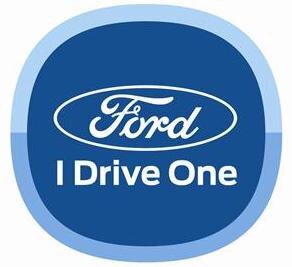All Activity
- Past hour
-
Agree with EREV functional benefits in theory but IMO it’s going to take the perfect balancing act between battery capacity and engine size in order to keep price down while still providing reasonable towing capabilities. Unfortunately every owner’s need is different so a lot of buyers won’t be happy no matter where the manufacturer draws that line. I’d personally like to see more done to improve hybrid pickups’ capabilities and efficiency, and also additional models/sizes.
-
To be clear, I was thinking and writing about buyers who just have to have the “EV” experience in their truck or large SUV; and are willing to spend more money to obtain that feature and or luxury; hence was comparing EREV against BEV option. As I stated previously I think EREVs will have a difficult time competing against latest hybrids once technology from smaller vehicles are scaled in size and power; at least on cost basis. Agree that pure range extender will likely be too inefficient for towing on a regular basis. Perhaps an EREV pickup will work for someone who drives close to home 90+ percent of time and rarely tows any long distance. The market is probably small under those conditions which may explain why RAM delayed their EREV AFAIK.
- Today
-
EREV seems to be the way to go with larger vehicles. As for towing, that's really only an issue with large EVs because charging on a road trip is a pain in the ass. With EREVs where the gas powertrain is what you're relying on for longer road trips, it's not a big deal because you just top off like every other ICE vehicle at a fuel station, so towing is a none issue. It's only an issue if recovering that range is a pain like it can be with an EV.
-
If EREVs cost significantly more than hybrids, and I think they will, it will be difficult to convince buyers to spend the added premium, particularly if they get very little or nothing in return from a financial standpoint. For cheaper vehicles where hybrids are already getting 50 MPG, there won’t be much cost savings IMO. Some buyers will undoubtedly prefer the EV-like driving mode possible with EREVs, but I can’t imagine that many buyers paying a significant premium for it. Where EREV makes more sense to me are for pickups and large SUVs that will be used for towing longer distances. Even then total cost of ownership may be difficult to justify compared to latest hybrid technology. Going beyond latest hybrid efficiency does not generate much energy savings due to diminishing returns.
-
For what it’s worth, Honda Civic hybrid from just over 10 years ago had 1.5L. And that was with less powerful electric motor. Obviously much depends on car size, weight and performance expectations. Older Civic Hybrid were probably smaller and slower than what most buyers want today, in US anyway. You may also be interested in knowing that current Toyota Yaris and Honda Jazz hybrids in other markets have 1.5L Atkinson engines, and achieve impressive fuel economy approaching 70 MPG (EPA rating would be lower). Basically saying that if Honda can get by just fine with 2.0L Atkinson in Accord or CR-V hybrids, then it shouldn’t surprise anyone that smaller vehicles can get by equally well with a smaller engine to optimize fuel economy. Granted Americans do not seem interested in vehicles the size of Honda Fit presently, but the technology is proven and available in case demand increases.
-
It's definitely gonna be a challenge without a doubt. Correct me if I'm wrong, but from my understanding, the biggest selling point of EREVs especially larger EVs, is because they still have ICE powertrains as generators, the battery packs themselves are much smaller than larger pure EVs, which means these larger EREVS are far more affordable than large pure EVs. I believe Ford was saying they believe their EREVs will be able to sell for about the same price as a nice hybrid. If that's true, I can see the appeal of those types of vehicles. Having a smaller battery so you enjoy all electric driving during short drives, while having the gas powertrain during longer trips sounds like a really good solution for people who want an EV, but also want to take long road trips without worrying about having to charge.
-
Fear doesn’t have to be justifiable to be real, and hence influence behavior.
-
How many batteries actually need to be replaced in say the first 10 years of ownership?
-
That’s what I was implying. A relatively affordable Tesla Model 3 as example with “existing” batteries already provides up to 363 miles of range, and can also charge fairly fast. Obviously some people don’t like the styling and others hate Musk, but point is that BEVs are not all that bad even now. There must be other hurdles, right? IMO issue of battery replacement fears for one needs to be addressed. As previously mentioned the upcoming Nissan Leaf and Chevy Bolt at even lower estimated prices may surprise. Or not. We’ll see soon enough.
-
But at the same time, LFPs are good enough for most use cases...seems like people come up with an excuse just not to buy something because it does something slightly differently.
-
Seems to be a bit of willful ignorance going on here that he is completely ignoring: The 2.0L made 160 horsepower at 6,500 RPM and 146 pound-feet of torque in non-ecoboost form 2.5L 168 horsepower and 170 lb-ft of torque in non-hybrid form 2.5L Hybrid is rated at 192 horsepower and 155 pound-feet of torque combined with the hybrid motor. The engine alone 162 HP The 1.5L Ecoboost makes 181HP and 190 ft lbs 2.0L Ecoboost makes 250 horsepower and 280 lb-ft of torque The 3.0L V6 made 240HP and 231 ft of torque The whole point of the Ecoboost engines where to downsize from a V6 and a larger I4 to packages that give you more power and equal or better MPGs vs their larger counterparts. The power numbers from the 2.5L are from 15 years ago, so there is a decent amount of loss from going to an Atkinson cycle given possible improvements in the power output of the engine over time. Like you said a NA 1.5L would be lucky to hit 100-120HP and a hybrid setup would maybe add another 30-40HP if you where lucky,
-
tbone started following Honest Don
-
Perhaps because a keyed ignition is mechanical and would be left in the on position upon shutdown, which would drain the battery?
- 1 reply
-
- 1
-

-
Yeah, unfortunately solid state batteries could still be many years away. It’s not just the technology, which is indeed promising, but also the higher cost per kWh. Projected prices I’ve seen are still much higher than present LFP as example.
-
No diesel. 6.8 gasser
-
Do you have a diesel? Those might be different.
-
Ford's use of keyed ignitions vary across the lineup. Some models are all push button start, and even those are not all "intelligent access". Keys do not bother me, but, it seem most want that feature and not sure what manufacturers still use keyed ignitions. Own a 2014 F350 and 2011 Mustang GT with keyed ignitions, and have a 2023 Bronco Basequatch with basic push button start which I prefer over "intelligent access". I also do not like the trend to all digital clusters, bigger screens and less buttons and knobs!
-
22 f350 6.7 4wd While pulling skid steer 11,000lb gravel road in 4 Hi the truck pulled hard to the left, I thought a tire went down, it stopped pulling, did it again to the right this time and started squealing really loudly. I stopped, felt all the hubs, nothing hot, full of air. Drove off and it did not do it again. The jake brake was also engaged! Anyone experience something like this?
-
honestdon started following Honest Don
-
Howdy guys, New to the group. I read a lot about the 30 min shut off at idle, I have a 2025 F-250 XL, and it idles as long as an hour and a half, that's the most I've let it run unattended? I bought it new and never had to change the settings. The only thing I notice that different from most post is I have a Key type ignition, not a push button. Any ideas why. Thanks Don
-
I believe EREVs are a good choice for larger vehicles, but for small, light, areo dynamic vehicles, that's basically the perfect use case for EVs. Apparently a lot of modern apartments are being built with charging stations in mind, or give tenants the option to have a charging station installed at their parking space if they pay for it. We'll see how that works out. It's also worth noting all future Ford EVs will have access to Tesla superchargers which are everywhere, and we're see a lot of charging stations pop up at work locations, restaurants, movie theaters, and shopping centers. Do you can pretty much charge your EV wherever you go. I'm not as concerned about the availability of chargers as much as I was 10 years ago.
-
I should listen to Mr Spock’s advice when he said "It would be impossible to discuss the subject without a common frame-of-reference". It’s same here which makes it seem like we are speaking different languages. If you actually believe your own words then ask Ford why their popular hybrid powertrain, as used in Maverick and various models, uses a 2.5L naturally-aspirated engine instead of replacing the hybrid’s engine with Ford’s 1.5L EB. And while at it, ask Toyota the same exact question given their popular hybrid powertrain installed in various vehicles also relies on a 2.5L NA engine instead of their 1.5L turbo. And don’t forget Honda too, though their improved hybrid powertrain has allowed use of smaller 2.0L NA engine.






